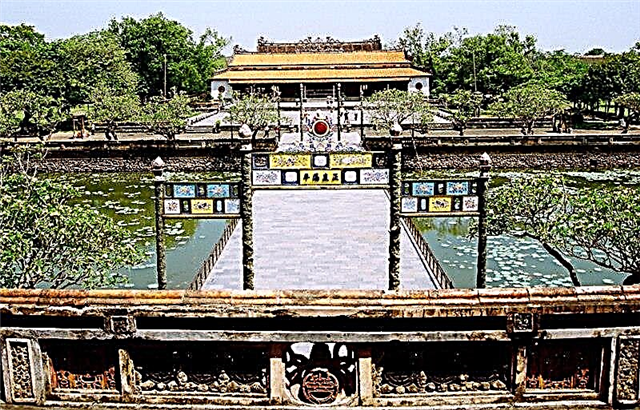Not far from the ancient Kremlin is one of the most beautiful cathedrals and temples in Kazan - the snow-white Pyatnitsky temple. According to the surviving documents, its history began in the second half of the 16th century. The most tragic events took place in the 1930s, when the ancient temple was turned into the Sixth City Prison. Today the revived and restored church is open to believers and tourists and pleases everyone with its beauty.
How the Pyatnitskaya Church appeared
14 years after the capture of Kazan by the troops of John IV the Terrible, a wooden church of St. Nicholas Zaraisky was built in the center of the capital of the former khanate. The new church had a Pyatnitsky side-altar and in the 16th century was considered one of the tallest buildings in Kazan.

In 1579, a devastating fire broke out in the city. Strong fire destroyed the entire northeast of the settlement and residential buildings near the Kremlin. The trouble did not go around the wooden church of St. Nicholas Zaraisky - it flared up overnight and burned to the ground. For a long time, the ashes remained empty, they did not dare to build anything on it.
When Kazan became rich, stone buildings began to appear in the city. As a rule, temples and civil buildings were built not at public expense, but at the expense of merchants or donations from parishioners.

In 1728, a wealthy merchant Ivan Afanasyevich Miklyaev allocated money for the construction of a new church for the workers of the local cloth manufacture. When everything was ready, the main altar was consecrated in honor of the feast of the Epiphany, and one of the two side-altars of the stone church was dedicated to Paraskeva Friday, beloved by Christians.
The fate of the temple in the XVIII-XX centuries

The new church became the main church for the parish, which was located next to the Kazan Mother of God Monastery. In this part of the city, poor people lived who could not donate much to the church, so the church was supported by an Orthodox female monastery.
Fires were the scourge of all Russian cities. Until the beginning of the 19th century, the Pyatnitskaya Church suffered from fire several times. Several times it burned out so badly that only bare walls remained. The parishioners had to restore the building every time, paint the interiors, buy liturgical utensils and icons.

In 1815, a great fire broke out in Kazan, after which the Pyatnitsky temple was reconstructed for several years. By 1821, only one side-chapel was restored. Divine services in the main church were continued only after 10 years. It was then that the church was re-consecrated, and they began to call it not Epiphany, but Rozhdestvenskaya.
The Pyatnitsky side-altar burned out so badly that in 1855 it was forced to rebuild and consecrate it anew. It is believed that the author of the project of the restored temple was Foma Ivanovich Petondi, a Russian architect who worked a lot in Orel and Kazan.

The history of the Pyatnitskaya Church is associated with many famous people. From 1877 until the end of his life in 1914, the duties of the head of the church were performed by the hereditary woodcarver Mikhail Alexandrovich Tyufilin. The talented master was engaged in the manufacture and gilding of iconostases for many churches and cathedrals of the Kazan diocese. Many of Tyufilin's creations were destroyed by time and people, but two beautiful iconostases have survived. One is in the Peter and Paul Cathedral of the city, and the other is in the temple of the Arsk cemetery.
After the coming of Soviet power, supporters of Patriarch Tikhon began to be oppressed in Russia. In different cities of the country, communities of the so-called "renovationists" were created, which included believers loyal to the policy of the new state. It was with the "renovationists" that the local authorities entered into contracts for the lease of religious buildings.

Since 1923, the old church of Paraskeva Pyatnitsa has also been occupied by the Renovationists. After the closure of the Annunciation Cathedral in Kazan, the Pyatnitskaya Church became the cathedral. The city authorities allowed to transfer here liturgical utensils, icons, crosses and reliquaries from all closed and destroyed monasteries and churches of the Kazan diocese. Soon the Pyatnitsky temple turned into a kind of church museum.
In the 1930s, the Soviet state tightened its policy in relation to any faith. During the anti-religious campaign, not only Orthodox Christians but also Catholics, Muslims and Buddhists suffered. In 1937, the Pyatnitskaya Church was closed to believers and turned into a transit prison. Officially, it was called City Prison No. 6.

Convicts were kept here, who, after the decision of the court or the meetings of the "troikas", were waiting to be sent to the camps. In the Pyatnitsky church, the guards shot people who were sentenced to death. After the execution of the sentence, the bodies were buried in or near the church. The memories of the journalist and historian Yevgenia Solomonovna Ginzburg have been preserved about the local prison.
In the postwar years, the Pyatnitskaya church was abandoned. When the church bell tower was demolished, the former religious building finally fell into disrepair and decay. Local historians and ethnographers tried to attract the attention of the authorities to the architectural monument. Finally, in the 1980s, the state found money to redecorate the church.

In 1993, the building was transferred to the balance of the Ministry of Culture of Tatarstan. In the Pyatnitsky church, they began to carry out repairs, in order to later organize a museum of Orthodox icons in the building. At this time, the attitude towards religion in the country changed. A few years later, the Pyatnitskaya church was returned to the believers, and a long restoration of the shrine began. By 2000, the lost bell tower was rebuilt next to the temple.
During the renovation work, terrible finds were made. The builders uncovered the mass graves of victims of political repression. A whole cemetery was discovered in and near the church - many skeletons of the executed people. At first, the unfortunates were buried at the large Samosyrovsky cemetery, on the eastern outskirts of the city.

In the late 1990s, more than 400 remains of those executed were buried on the territory of the Pyatnitskaya Church. A marble Memorial Cross was installed over the grave, and then a stone tomb was erected over the burial with donations from believers.
Architectural features
The beautiful church was built in the best traditions of the Russian Baroque. The main temple rises to 22 m. It has a design typical for many Russian churches - an octagon on a quadrangle. Although the temple portico is in the late Classicism style, it blends well with earlier forms and décor. The right side-chapel has not survived, so the composition of the building is slightly disturbed.

Inside the temple complex, near the local oncological dispensary, there is a small chapel. It contains the icon "The Tsaritsa" revered by believers. This image helps everyone who suffers from cancer.
Interiors and shrines
The magnificent four-tiered iconostasis is red in memory of all those killed within the walls of the church during the years of repression. Here you can see the ancient image of Paraskeva Pyatnitsa, which was still hanging in the wooden Pyatnitskaya church.

The parishioners consider the main shrine to be the part of the Tree of the Life-giving Cross of the Lord, which was brought to Tatarstan from Italy more than 10 years ago. In addition, the church contains icons with parts of the relics of Matrona of Moscow, St. Joasaph Bishop of Belgorod, Great Martyr Barbara, Fyodor Ushakov and Ignatius Caucasian (Brianchaninov).
Useful information for pilgrims and tourists

Chapel over the mass grave of victims of political repression on the territory of the temple complex
Today, the Orthodox church is under the jurisdiction of the Kazan Mother of God Monastery. The doors of the Pyatnitskaya Church are open to everyone from 7:00 to 19:00, admission is free. Services are held daily at 8:00 and 17:00. The main altar is dedicated to Paraskeva Friday, and the chapel is dedicated to the Nativity of the Mother of God.
The church has a parish library and a Sunday school.Twice a year, at the height of summer and late autumn, religious processions are held near the Pyatnitskaya church, in which several thousand believers take part.
How to get there

Chapel "Vsetsaritsa" on the territory of the temple complex
The Pyatnitsky temple stands in the Vakhitovsky district of Kazan, at 1/2 Bolshaya Krasnaya street. It is easy to walk here from the Kremlevskaya metro station. City buses No. 22, 23, 83 and 89 stop nearby. It is convenient to combine an excursion to the Pyatnitskaya church with sightseeing of the Kazan Kremlin.
Attraction rating:











